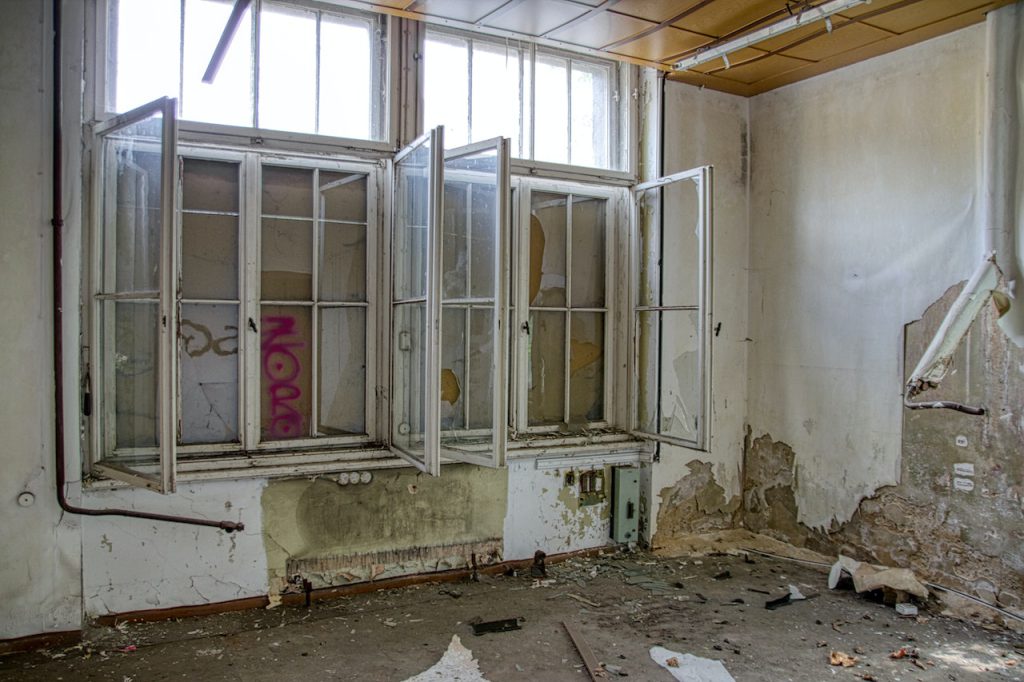Understanding the crucial role of fire and water damage assessment in insurance claims is key to navigating the aftermath of disasters. By assessing the extent of damage caused by these elements, insurance companies can determine appropriate coverage and support for policyholders. This process involves evaluating the impact on structures, belongings, and overall safety to ensure accurate compensation for restoration and recovery. Historical data shows that precise assessment not only expedites claim settlements but also aids in preventing fraudulent activities. Stay tuned to discover how this pivotal evaluation process shapes insurance claims and fosters trust between insurers and policyholders.
Table of Contents
ToggleImportance of Damage Assessment
Professional Fire Evaluation
Fire damage assessment involves assessing structural damage to guarantee safety and compliance with building regulations. Evaluating the impact of fire on electrical and plumbing systems is crucial for averting future dangers. Identifying salvageable materials helps in maximizing recovery efforts.
Water Damage Analysis
Inspecting for signs of water intrusion and determining its source and extent is vital in water damage analysis. Assessing potential mold growth and moisture retention in affected areas is essential to prevent health hazards. Understanding the impact of water damage on the property’s structural integrity is key.
Documenting Damage Extent
Capturing detailed photographs of all affected areas is crucial for creating accurate records. Developing comprehensive lists of damaged items, including descriptions and values, aids in documenting the damage extent. Ensuring documentation aligns with insurance requirements facilitates smooth claims processing.
Ensuring Insurance Claims Accuracy
Detailed Reporting
When assessing fire and water damage for insurance claims, it’s crucial to compile findings into a structured report. This report should clearly outline the extent of the damage and detail the necessary repairs. By providing a comprehensive overview, insurers can accurately evaluate the situation.
Including timelines for restoration efforts in the report is essential for effective planning and execution. These timelines help set realistic expectations for property owners and insurance companies alike. Having a clear roadmap ensures that the restoration process proceeds smoothly and efficiently.
Moreover, it’s vital to provide recommendations for further assessments if needed. By identifying potential areas that require additional evaluation, insurance claims can be more accurate and thorough. These recommendations contribute to a more comprehensive understanding of the damages incurred.
Avoiding Coverage Gaps
To prevent coverage gaps in insurance claims, it’s important to clarify the specifics of the insurance policy. Understanding what is covered and what is not can prevent surprises during the claims process. Property owners must be aware of their policy details to ensure full coverage.
Identifying any exclusions or limitations in the policy is crucial to avoid disputes later on. By addressing these limitations upfront, property owners can take proactive steps to mitigate potential issues. Clear communication regarding policy details is key to a successful claims process.
Advising property owners on necessary documentation is essential to avoid disputes with insurers. Providing thorough documentation of the damage and repairs can streamline the claims process. Property owners should maintain detailed records to support their claims effectively.
Supporting Claim Validity
In cases where expert testimony is required, it’s vital to provide expert testimony to substantiate assessment findings. Expert opinions can lend credibility to the damage assessment and strengthen the validity of the claim. Insurers rely on this expert input to make informed decisions.
Ensuring all documentation is thorough and meets insurer standards is paramount in supporting claim validity. By maintaining meticulous records and adhering to industry guidelines, property owners can bolster their claims’ credibility. A well-documented claim is more likely to be approved by insurers.
Assisting in clarifying complex damage scenarios helps strengthen claims by providing clarity on intricate issues. By breaking down complex damage assessments into understandable terms, property owners can effectively communicate their needs to insurers. Clear communication enhances the chances of a successful claim resolution.
Mitigating Further Damage
Identifying Hidden Issues
Property damage experts utilize specialized tools like moisture meters and thermal imaging cameras to detect hidden issues. These tools help identify water or fire damage not visible to the naked eye. By pinpointing these problems early, experts can prevent further deterioration. Assessing potential long-term effects of damage is crucial in determining the extent of restoration needed. Failure to address underlying issues may lead to secondary damage, increasing repair costs significantly. Experts recommend further inspections for areas of concern that require additional evaluation to ensure comprehensive restoration.
Preventive Measures
After the initial assessment, experts suggest immediate actions to mitigate further damage effectively. This includes implementing drying techniques, removing debris, and securing the property to prevent unauthorized access. To safeguard against future incidents, experts recommend protective measures such as installing smoke detectors and fire extinguishers. Educating property owners on routine maintenance tasks like checking electrical systems and inspecting plumbing can help prevent similar issues in the future.
Timely Interventions
Timely action is crucial in minimizing damage and costs associated with fire and water damage. Coordinating with emergency services for an immediate response is essential to prevent further destruction. Quick intervention can help salvage valuable items and reduce the overall impact on the property. Experts stress the importance of scheduling follow-up assessments to monitor ongoing conditions and ensure that no hidden issues resurface.
Guiding the Restoration Process
Prioritizing Repairs
Develop a clear action plan that prioritizes critical repairs based on severity. Ensure immediate attention to high-priority repairs to prevent further damage. By addressing urgent issues first, the restoration process becomes more efficient and effective.
Communicate repair priorities to the restoration team for efficient workflow. Clear communication ensures that everyone is aligned on the tasks at hand. This coordination minimizes delays and maximizes productivity throughout the restoration efforts.
Adjust priorities as new information arises during the restoration process. Flexibility is key in responding to unexpected developments. By staying adaptable, the restoration team can address evolving needs promptly and effectively.
Coordinating with Contractors
Facilitate communication between property owners and restoration contractors. Transparent communication fosters trust and collaboration. Property owners are kept informed of progress, while contractors understand the expectations for the project.
Ensure contractors have access to assessment reports for informed decision-making. Providing detailed reports allows contractors to make strategic decisions based on the assessment findings. This access empowers them to perform their tasks efficiently and accurately.
Monitor contractor performance to ensure adherence to the assessment guidelines. Regular oversight guarantees that contractors follow the established plan. By maintaining quality control, any deviations can be addressed promptly to maintain the integrity of the restoration process.
Efficient Resource Use
Optimize the use of materials and labor based on the assessment findings. By utilizing resources strategically, costs can be minimized without compromising quality. Efficient resource allocation also reduces waste and environmental impact.
Recommend recycling or reusing materials where feasible to reduce costs. Sustainability practices not only benefit the environment but also contribute to cost savings. By incorporating eco-friendly solutions, the restoration process becomes more cost-effective and responsible.
Track resource allocation to ensure budget adherence throughout the restoration. Monitoring resource usage helps in identifying areas for improvement and cost-saving opportunities. By maintaining a clear overview of expenses, adjustments can be made proactively to stay within budget constraints.
Providing Peace of Mind
Assurance for Owners
Property owners benefit from expert assessments that enhance trust in the assessment and restoration process. They are kept informed about each step, fostering a clear understanding of the situation. The involvement of expertise instills confidence in the recovery efforts.
Reducing Stress
Clear communication plays a crucial role in alleviating concerns related to damage and insurance claims. By providing guidance, property owners can navigate the claims process smoothly. Being a reliable source of information supports owners emotionally during this challenging time.
Confidence in Recovery
Professional assessments are essential for achieving successful outcomes in the restoration process. Sharing success stories from previous recoveries inspires hope and assurance in property owners. Proactive engagement in the restoration process is encouraged for optimal results.
Closing Thoughts
In the realm of insurance claims, accurate damage assessment plays a pivotal role. Ensuring precision in evaluating fire and water damage not only guides the restoration process but also provides you with peace of mind. By mitigating further damage through thorough assessments, you can expedite the claims process and secure the necessary support for restoration efforts.
Don’t underestimate the significance of meticulous damage assessment; it forms the bedrock of successful insurance claims. Take charge of this crucial step to safeguard your property and expedite the recovery process effectively. Your proactive approach to damage assessment can make a world of difference in navigating insurance claims smoothly and efficiently.
Frequently Asked Questions
1. What is the significance of damage assessment in insurance claims?
Damage assessment plays a crucial role in insurance claims by accurately documenting the extent of fire and water damage. This documentation ensures fair compensation and a smooth restoration process.
2. How does accurate damage assessment contribute to insurance claims accuracy?
Accurate damage assessment helps in providing precise information to insurance companies, leading to fair settlements for policyholders. It ensures that all damages are accounted for, minimizing disputes during the claims process.
3. How does damage assessment help in mitigating further damage?
By promptly assessing fire and water damage, mitigation efforts can be initiated to prevent additional harm to the property. Early identification allows for swift action to protect the structure and contents from worsening conditions.
4. In what way does damage assessment guide the restoration process?
Damage assessment serves as a roadmap for the restoration process by outlining the scope of work needed to repair the property. It helps restoration professionals prioritize tasks efficiently and restore the property to its pre-damaged condition.
5. How does damage assessment provide peace of mind to property owners?
Property owners gain peace of mind knowing that a thorough damage assessment has been conducted, ensuring that all damages are properly documented and addressed. This transparency and clarity help alleviate stress during the claims and restoration process.
Shield Your Home from Devastation with Garcia Plumbing and Home Restoration’s Fire and Water Damage Assessment!
Worried about the potential havoc fire or water can wreak on your home? You’re not alone. At Garcia Plumbing and Home Restoration, we know how overwhelming it can be to face the aftermath of fire or water damage. That’s why our dedicated team is here to provide thorough and reliable damage assessments that don’t just identify the problem—they pave the way for complete restoration and peace of mind.
Imagine the relief of knowing your home is in the hands of experts trusted throughout Contra Costa County. We don’t just assess the damage; we offer solutions that safeguard your home’s future. Our seasoned professionals bring years of experience, ensuring that every corner of your home is inspected and protected.
Don’t wait until it’s too late. Let Garcia Plumbing and Home Restoration be your first call in the face of disaster. Reach out today for a comprehensive fire and water damage assessment, and take the first step towards restoring your home—and your peace of mind!




